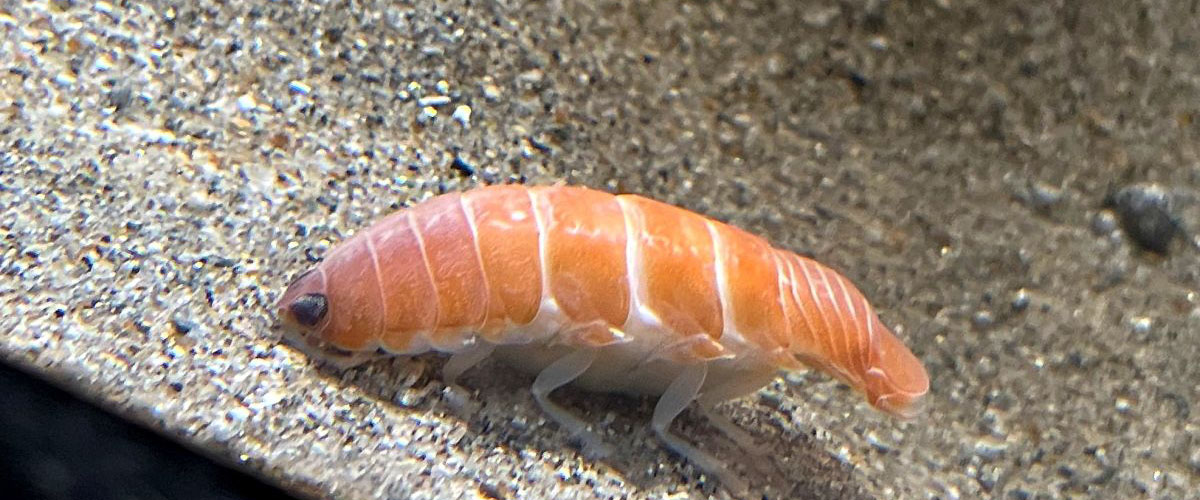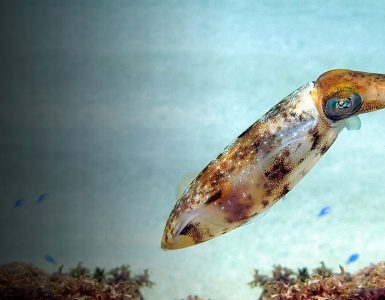A tiny 14-legged, salmon sushi-looking sea parasite, happens to be the biggest hit at the Aquamarine Fukushima in eastern Japan. The crustacean has orange and white markings on its back and a white underbelly, similar to salmon sushi. This mere inch-long creature belongs to crustaceans ‘isopods’, which makes it a part of the family of crabs, shrimps, and lobsters. Its genus is Rocinela. The other members of this species feed on the dead, decaying animals, but not this superstar of Aquamarine Fukushima, as it likes to parasite on the sea creature and feeds on their flesh. Unlike other dull or brown-looking members of this genus, it is a cute-looking bright salmon-colored creature. It was captured by fishermen off the coast of Rausu, Japan, and sent to Aquamarine Fukushima in late July
The blood-sucking parasite, made into the news after the aquarium staff identified the creature as an isopod and shared the picture in a Twitter post. And after the picture went viral, the visits to the museum have grown in number as they want to witness this queer-looking creature. The post featuring the crustacean received nearly 29,000 likes, compared to the average 500 earned by its mammal and marine neighbors—perhaps the only time a parasite stole the show.
A caretaker at the facility of the Aquamarine Fukushima told in an interview to the VICE that, “We didn’t know how long we’d be able to put the animal on display, or if it’d even live. But it held out—it stayed alive for us.” About the beautiful bright color of the creature, she said, “Because they’re parasitic, we think maybe the color of the fish it was feeding on transferred.” By the look of the animal, it is obvious that it must be feasting well on something, that gave it such nice colors. “Its belly is still swollen, which means it’s probably full from when it was still a parasite and feeding on another animal. When its belly gets flatter, that means it’s hungry,” she said. But there isn’t any exact method to find out what the isopod fed on.
While the sushi-like creature on display at the aquarium has captured the hearts of thousands of visitors, isopods are no joke — they’re quite gruesome parasites. For instance, while scanning the head of a fish, Rice University biologist Kory Evans was startled to find an isopod inside. The parasite had eaten and replaced the tongue of the fish.
















Add comment